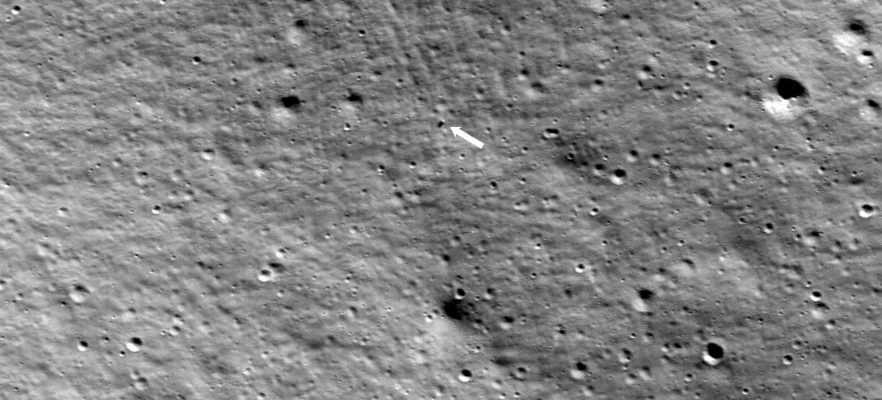(Washington) The probe Odysseus of the American company Intuitive Machines sent its first images of the southernmost place on the Moon where no spacecraft had ever landed, the private company having shared two photos on Monday on the social network X.
The craft, which measures more than four meters high, landed on the Moon at 6:23 p.m. (Eastern Time) on Thursday, a first for the United States in more than 50 years. This is also a first for a private company.
But twists and turns, notably a failure of its navigation system, complicated the final descent and the probe found itself lying on one side instead of landing vertically.
“ Odysseus continues to communicate with Nova Control flight controllers from the lunar surface,” Intuitive Machines said Monday, posting two photos on X, one of the spacecraft’s descent and another taken 35 seconds after it was fell, revealing the regolith of the Malapert crater.
The device notably transports scientific instruments from NASA, which wishes to explore the south pole of the Moon before sending its astronauts there, as part of its Artemis missions. The American space agency has decided to order this service from private companies.
This strategy should allow him to make the trip more often and for less money. But also to stimulate the development of a lunar economy, capable of supporting a lasting human presence on the Moon, one of the goals of the Artemis program.
It is a “success with small drawbacks”, commented astronomer and space mission expert Jonathan McDowell for AFP, estimating that, if “there are certainly things to be resolved for the next missions”, the NASA project is going in the right direction.
The Japanese SLIM probe, placed on the Moon since the end of January, has been activated again, Jaxa, the country’s space agency, announced on Monday. It was also placed at an angle and its photovoltaic cells facing west did not receive sunlight.
For Jonathan McDowell, these two falls could indicate that the upper parts of current probes are too heavy and therefore that current generation machines are more likely to overturn in low gravity.
